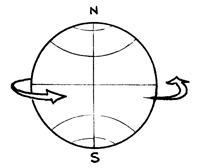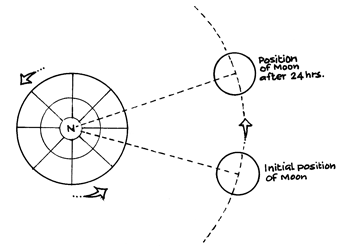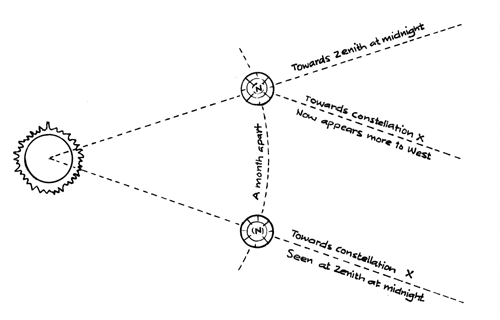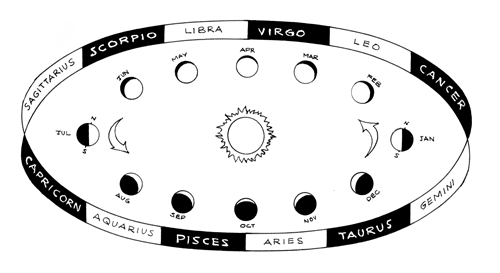Astronomy is probably the oldest of the sciences. It developed independently in many cultures. It generates awe and fascination even in lay people. Yet this discipline doesn’t find a major place in our school curriculum, and few students consider it a viable career option.
Students encounter astronomy to some extent in their science or geography courses. But it is dealt with in a rather descriptive manner, hardly worthy of an exact science. Neither the tools nor the theoretical methods employed by astronomers are explained in any detail. This could be partly due to the fact that the physics and mathematics required is too advanced for school level students.
But surely some of the observations, inferences and calculations must be accessible to even middle school students.
Students faced with a glut of information often ask, “But how do we know all this?” The information may be on the relative positions, distances, sizes and movements of heavenly bodies. [For the moment let us ignore information related to planetary temperatures, atmospheric composition, and so on.] The aim of this article is to explore how far we can bring an observation/discovery approach to the subject and make it more real to students.
At the outset it should be emphasized that our astronomical knowledge is the result of centuries or even millennia of patient observation made by many individuals and institutions, accompanied by meticulous recording and analysis. Simple but precise instruments have played a great part in furthering our understanding of the heavens. Clocks and chronometers, clinometers and sextants, vertical poles and shadows—the working and use of such tools of the trade could be explained first.
There are also other factors that gave ancient peoples an advantage over us as observers of the skies. Early humans spent more time outdoors, probably often sleeping under clear open skies. In the absence of interference from artificial lighting and atmospheric pollutants the heavens must have presented an arresting sight. Their vision was also probably sharper. They had the time and patience to make observations over long periods of time.
Still, instead of being discouraged by these comparisons, let us try to see how much information we can extract from direct observation over a short period of time using only the simplest aids.
The following has been written from the point of view of an observer located slightly north of the equator.
Spinning like a top
Let’s start with the most impressive object in the sky—the sun. We see the sun rising every morning in the east, moving across the sky to the opposite horizon and setting in the west every evening. Though this is quite obvious, a few direct observations of sunrises and sunsets would be in order. The movement of the sun across the sky is best tracked by following the changes in shadows (direction and length) of buildings, trees or flag-poles over a few days. This observation can be explained in two ways: (a) the sun goes around a stationary earth or (b) the earth spins around itself like a top, completing one turn in 24 hours.
Now, it requires a little more effort to see that the moon and the stars too, on the whole, rise in the east, move across the sky and set in the west. There are some differences, no doubt. The rising and setting of the moon does not always take place at dawn and dusk. Similarly, the rising and setting of different constellations change with the seasons (more about this later on). But the overall pattern of rising in the east and setting in the west holds for these heavenly objects too. Now do these also move around the earth? In an anthropocentric age, people believed so. In today’s intellectual climate it would not need much persuasion to accept the less far-fetched explanation—that the earth spins on an axis from west to east and this causes the daily ‘apparent movement’ of the sun, moon and stars across the sky from east to west.
 |
If the earth spins like a top, there must be two points on its surface which are stationary. These diametrically opposite points are the North and South poles. It is worth emphasizing that it is the rotation of the earth that imposes the North- South axis; otherwise all points on a sphere are equivalent. (Some students wonder why there is no ‘East pole’ or ‘West pole’.)
In the orientation of Fig. 1., (with N on top), if we look down on the earth from a point above it, the earth spins in an anti-clockwise direction. Of course, there is no theoretical objection to drawing the figure with S on top since in space there is no ‘up’ or ‘down’. It has become customary to picture the earth like this. Why this is so can be discussed and debated (Is Australiareally Down Under as often described?).
Moonlit nights—and days!
Now let us return to a consideration of the moon and its movement. A few days, observation of the time of the rising of the moon (best done at and immediately after a full moon) is enough to convince students that though the moon goes around the earth (apparent motion) it is not in synchrony with the apparent motion of the sun. The moon rises about 50 minutes later each day. In real terms, the earth has to make more than a full turn to have the moon again in the same relative position. As Fig.2 shows, the moon has moved along a circular path around the earth in an anti-clockwise direction (again looking down from a point ‘above’ the earth).
 |
Most textbooks deal with the phases of the moon with a fair amount of detail. However there are a few aspects worth emphasizing. The duration of the moonlit part of the night also varies from night to night. It is maximum on a full moon night—the moon rises as the sun sets and sets as the sun rises again. So there is moonlight throughout the night. On the nights following full moon the moon rises progressively later and is still up in the sky at the next dawn. On new moon day the moon rises and sets with the sun—hence it is not seen. On the nights following a new moon, the moon is seen in the western sky at sunset and it sets shortly after. As we approach the next full moon, the moon appears more eastward at sunset and sets before the next sunrise. Thus, in the waxing phase, the early part of the night is moonlit. This observation may be of relevance insome situations—when planning a camping trip, for instance!
Tracking the constellations
Before we take a look at the motion of the stars/constellations, a few clarifications are necessary. The statement made earlier that the constellations move from east to west is not quite correct. It is true only on the equator and almost true at low latitudes. Once we move to higher latitudes we can see that all the stars actually move in concentric circles around a fixed point in the sky. The Pole Star is close to this end and can be taken to mark this point. Time-lapse photographs of the night sky taken at different places can be shown to thestudents to drive home this idea.
As we move to more northern latitudes the Pole Star appears at higher elevations until at the North Pole it is directly overhead. Similar observations can be made in the southern hemisphere but this has the disadvantage that thereis no prominent star directly overhead the South Pole.
It could also be pointed out that all constellations are not visible from all parts of the earth’s surface. People living just north of the equator are fortunate since they can see most of the celestial sphere, including the twenty brighteststars.
Next we consider the apparent motion of the constellations. We shall try to see what a careful observation of this can reveal. A few stray observations are enough to convince one that not all constellations are visible all the time. On any night some constellations are not seen and what is seen also changes as the night progresses. This exercise is best started in winter, since many of the prominent ones are visible then. To start with, a few hours’ observation every night may be needed but, later on, widely-spaced observations would suffice. We note that the constellations move across the sky from east to west (stars also rise and set) more or less at the speed of the sun. This doesn’t tell us much. But if we compare the positions of a prominent star or constellation (preferably one close to thecelestial equator) on two nights a month apart (making the observations at thesame time of the night), the difference is noticeable. We see that the constellationhas shifted to a more westerly position.
 |
As Fig. 3 shows, this observation leads to the conclusion that the earth moves around the sun in an anti-clockwise direction (looking from a point ‘above’ the earth, as before). A couple of clarifications regarding the figure must be made. The straight line joining the sun’s centre to the earth’s centre, when produced, points to the Zenith at midnight (being the direction diametrically opposite to the direction of the sun). The stars are so far away compared to the earth-sun distance that they appear in the same direction even though the earthhas moved along its orbit.
Observations with a simple clinometer reveal that the angular shift of a star in a month’s time is around 30 degrees. That is, the line joining the earth to the sun has moved through 30 degrees in one month. To move through 360 degrees it would take 12 months, being the period of revolution of the earth around the sun. This is further affirmed by the observation that after a full year the same pattern of constellations reappears. To be precise, the same constellation appearsat the same point in the sky at the same time of the night.
 |
Fig. 4 gives the relative positions of the sun, earth and the Zodiacal constellations at various times of the year. The special significance of these constellations is that they mark the ‘superhighway’ along which the sun, moon and the planets appear to move. This last observation leads to another inference —that the orbits of the moon (around the earth) and the earth (around the sun), as also most planetary orbits, are roughly in the same plane.
It is hoped that the above-mentioned activities will give students a flavour of the kind of observations and inferences on which our astronomical knowledgerests, and help them construct their own picture of our neighbourhood in space.
If a child is to keep alive his inborn sense of wonder, he needs the companionship of at least one adult who can share it, rediscovering with him the joy, excitement and mystery of the world we live in.
[Rachel Carson]

